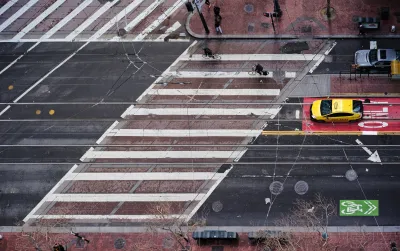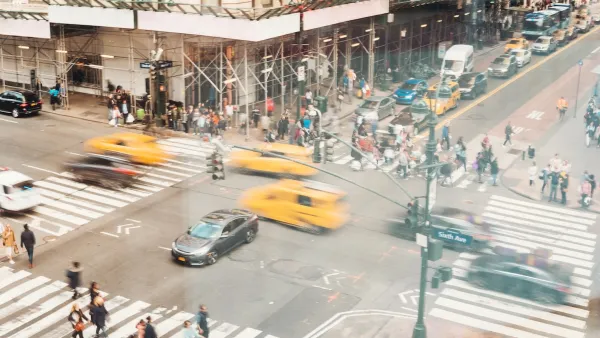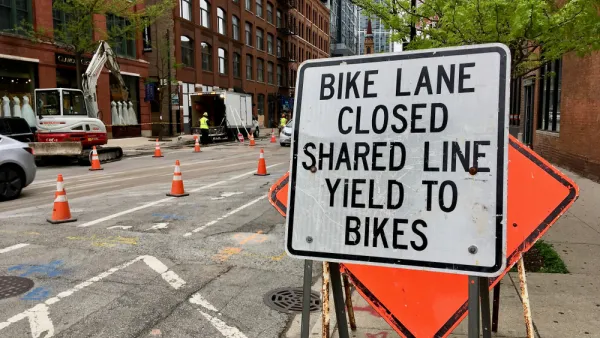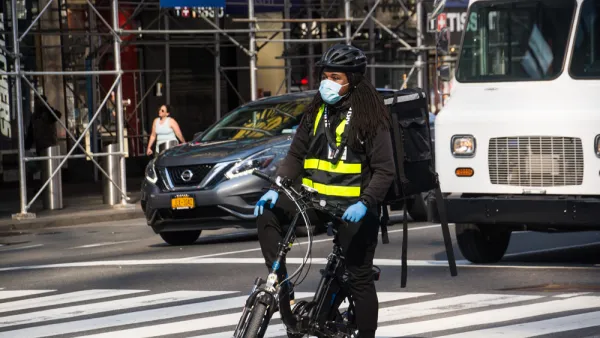The program’s outcomes in different cities show varying levels of success and some failures.

Laura Laker takes a closer look at Vision Zero, a traffic safety program designed to decrease, and ultimately eliminate, traffic deaths and injuries. In 2014, New York was the first large American city to adopt a Vision Zero program. The city lowered traffic speeds on particularly dangerous streets, installed features that slowed traffic, and put in speed cameras. Road fatalities decreased by over 25 percent and pedestrian deaths by almost 50 percent by 2017.
Los Angeles, on the other hand, ran into problems when it started up a Vision Zero program last year, and road fatalities eventually increased by 80 percent, reports Laker:
On Temple Street, where 34 people were killed or severely injured within 2.3 miles in eight years, a “road diet” expected to reduce crashes by up to 47% met backlash from residents and drivers. Local city leaders downgraded lane removals to things that wouldn’t interfere with motor traffic: sidewalk repairs, new traffic signals and crosswalks.
London recently adopted its own Vision Zero plan, and it is also facing resistance. “In June, mayor Sadiq Khan’s flagship pedestrian safety scheme, the pedestrianisation of Oxford Street, was blocked by the local borough, Westminster city council, following local concerns about traffic displacement,” says Laker.
Advocates say Vision Zero programs need strong political leadership to push through the kinds of infrastructure and design changes necessary for creating a safer urban landscape. In addition, policing needs to focus more on drivers and less on pedestrians and cyclists, they say.
FULL STORY: Vision Zero: has the drive to eliminate road deaths lost its way?

Analysis: Cybertruck Fatality Rate Far Exceeds That of Ford Pinto
The Tesla Cybertruck was recalled seven times last year.

National Parks Layoffs Will Cause Communities to Lose Billions
Thousands of essential park workers were laid off this week, just before the busy spring break season.

Retro-silient?: America’s First “Eco-burb,” The Woodlands Turns 50
A master-planned community north of Houston offers lessons on green infrastructure and resilient design, but falls short of its founder’s lofty affordability and walkability goals.

Test News Post 1
This is a summary

Analysis: Cybertruck Fatality Rate Far Exceeds That of Ford Pinto
The Tesla Cybertruck was recalled seven times last year.

Test News Headline 46
Test for the image on the front page.
Urban Design for Planners 1: Software Tools
This six-course series explores essential urban design concepts using open source software and equips planners with the tools they need to participate fully in the urban design process.
Planning for Universal Design
Learn the tools for implementing Universal Design in planning regulations.
EMC Planning Group, Inc.
Planetizen
Planetizen
Mpact (formerly Rail~Volution)
Great Falls Development Authority, Inc.
HUDs Office of Policy Development and Research
NYU Wagner Graduate School of Public Service




























